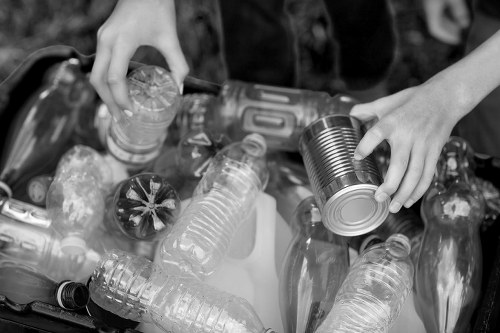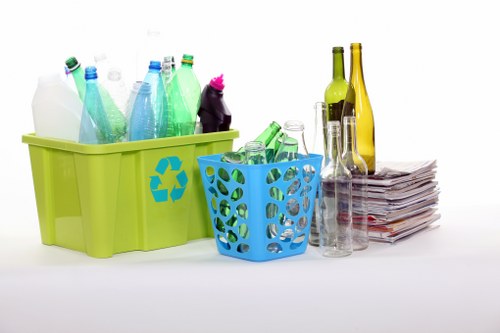Litter Clearance in Clearance Sucks: Effective Solutions for a Cleaner Environment

Litter clearance plays a crucial role in maintaining the aesthetic and environmental quality of our communities. However, in areas where clearance sucks, the task becomes daunting.
Understanding the challenges faced in effective litter clearance is the first step towards implementing sustainable solutions. This article explores various strategies and best practices to overcome the hurdles associated with litter clearance.
From community involvement to the latest technological advancements, there are multiple avenues to enhance the efficiency of litter clearance efforts.
The Importance of Litter Clearance

Litter not only detracts from the beauty of our surroundings but also poses significant environmental risks. Improperly disposed waste can lead to pollution of waterways, harm wildlife, and contribute to the spread of diseases.
Effective litter clearance ensures that public spaces remain clean, safe, and inviting for everyone. It also reflects the community's commitment to environmental stewardship and public health.
Moreover, clean environments can boost local economies by attracting tourists and improving property values.
Environmental Impact

The presence of litter can disrupt ecosystems and harm various forms of wildlife. Animals may ingest harmful materials or become entangled in debris, leading to injury or death.
Additionally, litter contributes to soil and water contamination, which can have far-reaching effects on plant life and water quality.
Proper waste management and litter clearance are essential to mitigating these environmental impacts and preserving natural habitats.
Challenges in Litter Clearance

One of the significant challenges in litter clearance is the sheer volume of waste generated daily. High-traffic areas, such as parks and beaches, accumulate litter quickly, making regular cleanup a necessity.
Another obstacle is the lack of adequate resources, including funding and manpower, to carry out thorough litter clearance operations.
Moreover, public apathy and improper waste disposal habits contribute to the persistence of litter problems.
Public Participation

Engaging the community is vital for the success of litter clearance initiatives. Without active participation from residents, the efforts to maintain cleanliness are significantly hindered.
Educational campaigns and volunteer programs can foster a sense of responsibility and encourage individuals to take part in keeping their environment clean.
Incentivizing proper waste disposal and providing accessible waste bins can also promote better habits among the public.
Strategies for Effective Litter Clearance

Implementing a combination of proactive and reactive strategies can enhance litter clearance efforts. Regular maintenance schedules ensure that public spaces remain clean and free from debris.
Using appropriate tools and equipment, such as automated litter collectors and eco-friendly cleaning agents, can improve the efficiency of cleanup operations.
Additionally, collaborating with local businesses and organizations can provide additional support and resources for litter clearance initiatives.
Adopting Best Practices

Adopting best practices in waste management is essential for effective litter clearance. This includes proper categorization and disposal of waste, recycling initiatives, and minimizing single-use plastics.
Training staff and volunteers on best practices ensures that litter clearance is carried out systematically and responsibly.
Continuous evaluation and improvement of litter clearance methods can lead to more sustainable and long-term solutions.
Professional Services vs DIY

Deciding between hiring professional litter clearance services or opting for a DIY approach depends on various factors, including the scale of the problem and available resources.
Professional services bring expertise, specialized equipment, and efficient processes to the table, ensuring thorough and timely cleanup.
On the other hand, DIY efforts can foster community spirit and provide cost-effective solutions for smaller-scale litter issues.
Cost-Benefit Analysis

Conducting a cost-benefit analysis helps in making informed decisions about litter clearance methods. Professional services may incur higher initial costs but can lead to better results and long-term savings.
DIY methods, while cost-effective, may require significant time and effort, which could be a limiting factor for some communities.
Balancing the pros and cons of each approach can help determine the most suitable strategy for effective litter clearance.
Environmental Impact of Proper Litter Clearance

Proper litter clearance has a profound positive impact on the environment. It helps in reducing pollution, conserving natural resources, and protecting wildlife.
By removing waste from ecosystems, we prevent the degradation of habitats and maintain the balance of natural processes.
Furthermore, effective litter clearance supports broader environmental goals, such as sustainability and climate change mitigation.
Sustainability Practices

Incorporating sustainability into litter clearance practices ensures that efforts are environmentally friendly and resource-efficient.
This includes using reusable cleaning materials, implementing recycling programs, and minimizing carbon emissions through eco-friendly transportation methods.
Sustainable practices not only contribute to environmental preservation but also promote a culture of responsibility and care.
Community Involvement in Litter Clearance

Engaging the community in litter clearance fosters a collective sense of ownership and pride in public spaces. Community-led initiatives can amplify the impact of cleanup efforts.
Organizing neighborhood cleanups, educational workshops, and awareness campaigns can encourage active participation and sustained commitment to maintaining cleanliness.
Collaborative efforts between residents, local authorities, and organizations can create a unified front against littering.
Volunteer Programs

Volunteer programs are an effective way to mobilize community members for litter clearance activities. Volunteers bring energy, diverse skills, and a shared passion for improving their environment.
Providing training, resources, and recognition to volunteers can enhance their engagement and effectiveness in cleanup operations.
Moreover, involving different age groups and demographics can ensure a wide-reaching and inclusive approach to litter clearance.
Technology in Litter Clearance

Advancements in technology have revolutionized litter clearance methods, making them more efficient and effective. Automated litter collection systems, smart bins, and data analytics are some of the innovations shaping the future of litter management.
These technologies enable real-time monitoring, efficient collection routes, and better resource allocation, significantly enhancing the overall effectiveness of litter clearance efforts.
Integrating technology into existing systems can streamline operations and provide valuable insights for continuous improvement.
Smart Solutions

Smart solutions, such as IoT-enabled bins and AI-powered data analysis, are transforming litter clearance strategies. These technologies allow for predictive maintenance, efficient routing, and real-time tracking of litter levels.
Implementing smart solutions can lead to significant cost savings, reduced environmental impact, and improved service delivery in litter clearance operations.
Embracing these innovations is crucial for modernizing litter clearance and achieving sustainable results.
Best Practices for Maintaining Cleanliness

Maintaining cleanliness requires a proactive and consistent approach. Establishing regular cleanup schedules, providing adequate waste disposal facilities, and enforcing anti-littering laws are essential components of effective litter management.
Moreover, promoting a culture of cleanliness through education and awareness initiatives can sustain long-term litter clearance efforts.
Continuous monitoring and feedback mechanisms ensure that litter clearance strategies remain effective and adaptable to changing needs.
Educational Initiatives

Educational initiatives play a vital role in fostering responsible waste disposal behaviors. Schools, community centers, and local organizations can conduct workshops and seminars to educate individuals about the importance of litter clearance and environmental conservation.
By raising awareness and providing practical knowledge, educational programs empower individuals to take meaningful actions towards maintaining a clean environment.
Collaborating with educators and leveraging multimedia resources can enhance the reach and impact of these initiatives.
Conclusion

Effective litter clearance is integral to preserving the beauty and health of our communities. Despite the challenges posed by clearance sucks, implementing strategic solutions, fostering community involvement, and leveraging technology can significantly improve litter management efforts.
By adopting best practices and promoting a culture of responsibility, we can achieve lasting results in maintaining clean and sustainable environments.
Take action today to contribute to a cleaner, healthier, and more vibrant community. Contact us today to learn more about our litter clearance services and how we can help you make a positive impact.
Call to Action
Ready to make a difference in your community? Book your litter clearance service now and join us in creating a cleaner, greener environment for all.